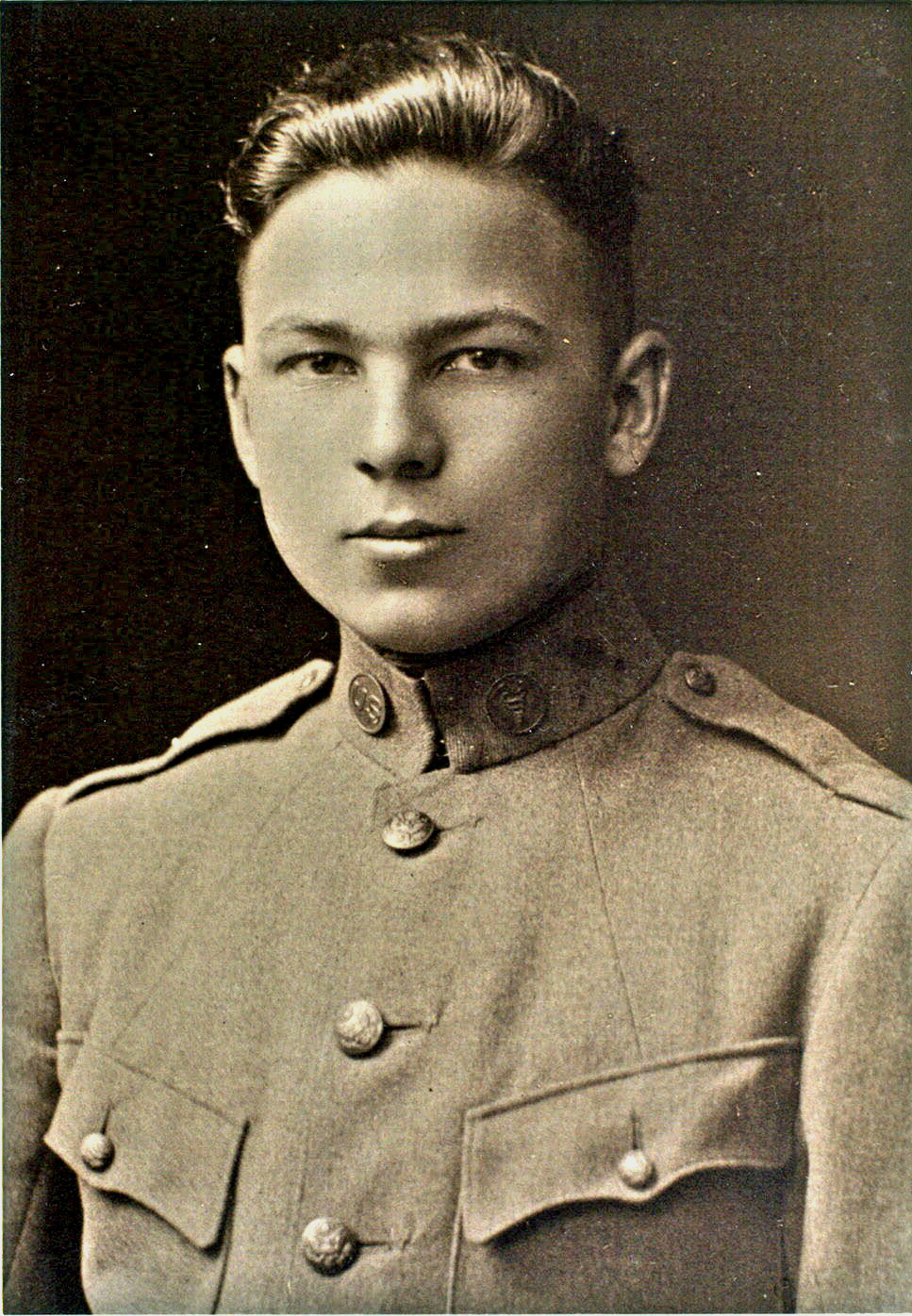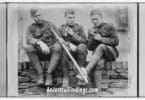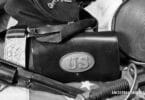The term ‘doughboy’ is one which remained a popular nickname for US servicemen for almost 100 years and which almost certainly had its origins in the Mexican-American War of 1846-1848. The suggestions for the first uses of the name are varied and while some have merit, there are others which are quite clearly unlikely at best.
Mexican-American War of 1846-1848
The Mexican-American War, which commenced in 1846, came about as a direct result of the annexation of Texas (then an independent country) by the United States. Mexico still viewed Texas as Mexican territory, despite the complete failure of their forces during the Texas Revolution of 1836.
The war lasted for two years and ended with the sacking of General Santa Anna, who had led the ill-fated campaign in Texas during the Texas Revolution, and the surrender of the Mexican forces in the early part of 1848, with many of the larger Mexican cities having fallen under American control.
As stated above it was during this conflict that the term ‘Doughboy’ was first used to describe American soldiers.
Etymology
Although it was the US soldiers of the First World War who were best known as doughboys, the exact origins of the word are unclear. It was widely used by British sailors and soldiers alike, during the Napoleonic Wars, with these men becoming familiar with a fried flour dumpling called a ‘doughboy.’ These are believed to be the predecessor of the modern doughnut and it is possible the word was first used to describe these tasty treats.
Meanwhile, in the United States, the term was used to describe baker’s apprentices and this could be the link that historians have been seeking. It would be too much of a stretch to see that a couple of young baker’s apprentices, drafted into the army and referring to one another as ‘doughboy’ could quickly catch on and spread.
It may also have come about as a slight change to the term ‘dough-head’ which was used as an idiom around that time, for someone who was stupid.
Certainly, as far as the US military goes, the word seems to have first appeared during the aforementioned war against the Mexicans and there seems to be no reason to doubt that this was where it originated in that context, as far as America was concerned.
Origins
There are a number of suggestions and theories for how the term ‘doughboy’ first came into common usage. We have already established that its first use was in the Mexican-American War of 1846-1848, and how the American infantrymen in the American Expeditionary Force of World War I were the first to be widely known by the name.
But the exact reason for the terminology is difficult to pin down and there are numerous theories.
One of the early ones was that it was because the uniform the American soldiers wore had a white belt. This was kept clean by using pipe clay or dough. This seems like a simplified idea for me, however, as they would have used other methods of cleaning and why should this particular one have stuck?
Another explanation was that these American soldiers loved fried flour dumplings and this contributed to how they got their names. An alternative to this was that the Salvation Army sent volunteers to France during the Great War, to cook doughnuts for the troops. This reason clearly does not take into account the earlier use of the name during the Mexican-American war and the fact that the term was already in use prior to the troops arriving in Europe.
Another suggestion was because of a dough and rice concoction, which were the rations of troops during the 1846-1848 war, were fashioned into a bread-like food and then slowly baked in the ashes of a camp fire, or speared on the end of a bayonet to be toasted, much like the tradition of campfire marshmallows. This theory was raised following the discovery of written memoirs of a soldier of the Mexican-American war and could certainly hold some merit.
Buttons on infantry coats were also said to resemble the shape of the dumplings the soldiers ate, although there may be some confusion about which war these uniforms relate to.
There were also jokes made about the name. One popular one, possibly originating from British and French soldiers who had borne the brunt of the fighting in the trenches, for 3 years prior to American involvement, commented that the doughboys were ‘kneaded’ in 1914 but didn’t ‘rise’ until 1917. This sort of dark sarcasm is typical of front line soldiers from any war in any century. Although an entertaining story, this joke probably was likely to have been spawned by the word, rather having any part in its creation.
The adobe theory is perhaps the one which would most closely fit. The idea is that the soldiers, marching into Mexico across a dry countryside, kicked up vast amounts of dust which then stuck to their uniforms and gave them the look of the adobe buildings which were such a common feature. It doesn’t take too much of a linguistic leap to see that ‘adobe’ could have transformed into ‘doughboy’ over quite a short time
World War I
The troops of the American Expeditionary Forces (AEF), which were sent to fight in Europe in 1917, were the first ‘doughboys’ to make an appearance in a theater of war outside the United States.
While their participation in that year was only on a small scale, it increased steadily, until there were some 1 million American soldiers in France by the following year, with that number doubling by the end of the war.
The contribution to the war by American doughboys, compared to that made by British and French troops in the earlier gigantic battles of the conflict, was undoubtedly tiny by comparison during the early months of US participation. However, with the huge numbers of American troops eventually swelling the Allied armies as the months progressed, it was only a matter of time before reality set in and the Germans agreed to an Armistice.
Since 1940
The doughboy moniker fell out of favor with the army and it was gradually replaced around 1940, with the more modern term of GI taking over. GI is derived from either Government Issue or General Issue and has remained the preferred name to be used for American servicemen since WWII.
It’s not clear why the use of the word doughboy fell into disuse, but it may have come about during the Great War when US equipment was stamped with GI and American servicemen referred to German artillery rounds as ‘GI cans’.
By the time the US servicemen of the Second World War had arrived in Europe, the doughboy was no more and the GI was the favored nickname.
Statues
Following the Great War, it was felt that there was a need to honor the men who had served in France. The Spirit of the American Doughboy, designed by E. M. Viquesney, was a copper statue which appeared in scores of communities across the United States during the 1920’s.
It depicts a ‘doughboy’ walking through shattered tree stumps, probably relating to a French battlefield of the time, strung with barbed wire, with a rifle in his left hand and a hand grenade in his right. More than 150 copies of this stirring memorial were created for towns and cities across the nation and the Smithsonian Institute now lists 159 individual locations scattered throughout the country.
The original “Doughboy” statue was completed in 1921 and is located in the tiny community of Nashville, Georgia, although it was not the first one to be installed.
All of the originals were cast from copper, with three later ones being made from marble and a number of zinc ones being created by the artist during the 1930’s and 1940’s.
Some other artists went on to make copies and there were several replacements made for damaged doughboys as the years passed, but the original design still outnumbers all the others put together.
Many of them can be seen in cemeteries, town squares, outside of museums, in parks, at the entrances to courthouses and other places. The statues are believed to be the second most-viewed example of outdoor statuary in the U.S. with only the Statue of Liberty being seen by more people.
The Last Doughboy
America’s last doughboy was Frank Buckles. Having joined the US Army in August 1917, at the age of just 16, Buckles was sent to France in early 1918 and served as a driver. Buckles died in West Virginia at the age of 110 in 2011, the last one of the 4.7 million doughboys of World War One. He is buried in Arlington National Cemetery.







